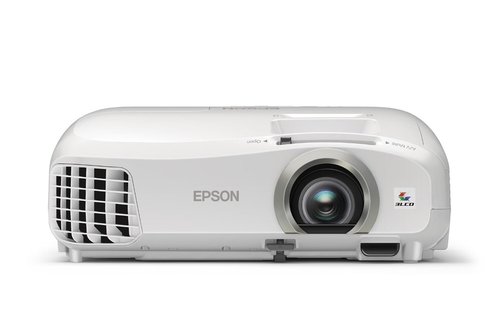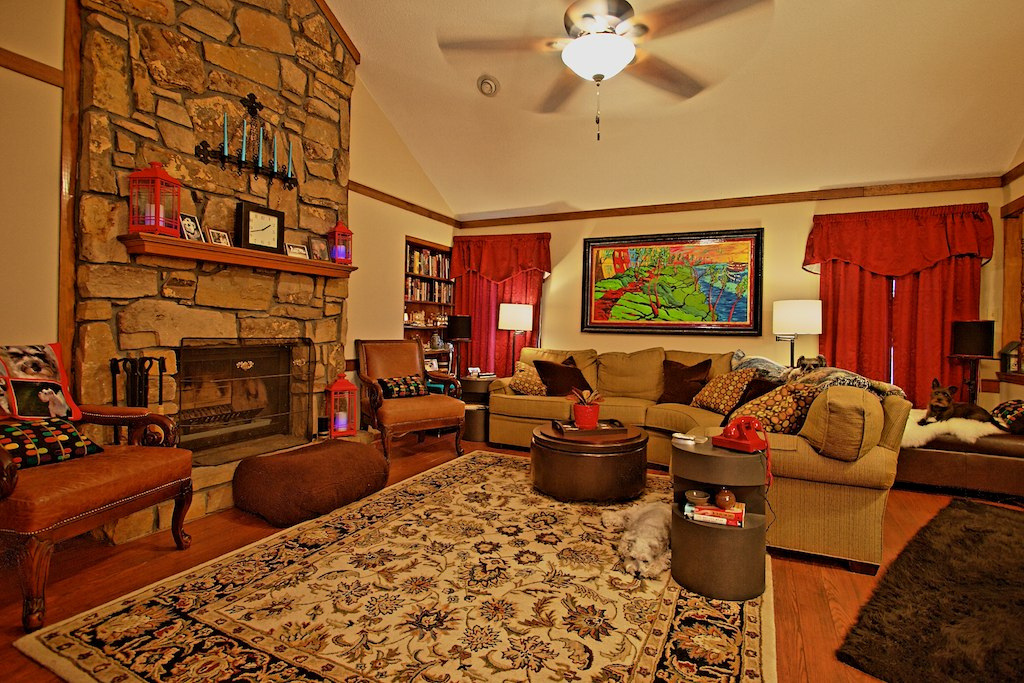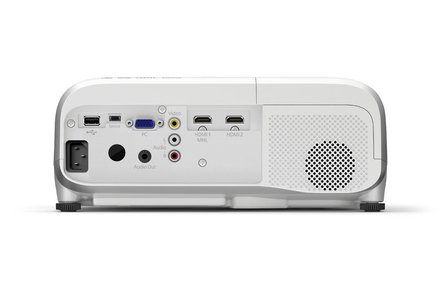Why A Projector?
Note: I get paid commissions for purchases made through any links to Amazon products in this post.
Movie Night
The Hook Ups
Note: I get paid commissions for purchases made through any links to Amazon products in this post.
The Setup
I tried out the different picture modes. The "bright"/"dynamic" modes turn the lamp brightness up so that you can watch programming in rooms that are not dark. It should be noted that the Epson is bright with "2200 lumens of color brightness and 2200 lumens of white brightness". One of the main competitors is a DLP (which, unfortunately, many see rainbows) that has color brightness of 1390 which can adversely affect color quality in some rooms.
With all of the lights in our living room on, I could still watch TV, but it looks better and less yellow ( which may be a side effect of our warm room lighting) as you turn the lights down. Also, in these " bright" modes, you will get some noticible fan noise that some might find distracting. The noise is worse from the front of the projector, so it is another reason that it works nicely on a coffee table in front of your seating position.
As you move to the "Eco" modes, the fan noise gets much, much quieter. I could barely hear it even when the audio was silent. These modes are better for suited for dark rooms because they cut the light output to 1500 lumens of white brightness.. However, in all modes the picture looks pretty good out of the box with minimal room light.
One thing that should be mentioned is there is a trade off with contrast levels and deep blacks with this projector compared to projectors that are meant to be used exclusively in dark rooms. Personally, I am not a videophile, so I was happy enough with the contrast levels after calibrating with Joe Kane's Digital Video Essentials Blu-Ray Disc. The Epson claims contrast levels of 35,000:1. While it is difficult to know exactly what this number means, keep in mind that Epson has a projector that costs around 3 times more that has a contrast ratio of 600,000:1. So, it is obvious that it isn't close to more expensive projectors.
This shortfall will keep some people away, especially those that can control ambient lighting, but I didn't consider it a major concern since we are using it in our living room and we will have a lot of circumstances where the room won't be dark enough to notice the lack of deep blacks. Also, with 4k projectors on the rise, I am not sure I would want to invest a lot of money for that extra detail in 1080p projectors right now.
Note: When I ran the calibration disc, I was unable to adjust for the blacker than black setting. However, I was able to see and calibrate the projector for the setting that was slightly brighter than true black. While this means that some detail will be missing from black scenes, I really didn't mind. I watched The Matrix on Blu-ray and there was still some detail in jackets and outfits that appeared black. Also, I adjusted for color, but when I dialed in the blue channel, greens were slightly off, but I did not notice it when watching movies.
3-D Goodness
Note: I get paid commissions for purchases made through any links to Amazon products in this post.
We have watched two movies in 3D (Lion King on Blu-Ray and Inside Out which was pay-per-view from DirecTV). In both cases, we felt that the ability to watch them in 3D significantly improved the enjoyment and experience of these movies. While I have never been a big advocate for 3D, I have changed my mind. I wouldn't consider a projector for my main living space in the future if it did not have 3D capabilities. For movies like Inside Out, it would be like having chocolate cake without ice cream. That doesn't mean that I want Casablanca remade it 3D, it just means that some movies, especially animation, can be better and more fun in 3D.
Gaming
Specialized Settings
Detail enhancement - Enhances details to create clear outlines.
Frame interpolation (4 settings: Off, Weak, Normal, Strong) - smooths fast moving video by comparing consecutive frames and inserting an intermediate frame between them.
Auto Iris - (3 settings: Off, Normal, High Speed) - Adjusts the projected luminance based on the image brightness when certain Color Modes are selected.
It should be noted that turning on the Auto Iris is best for dark rooms. However, be aware that you will hear the iris adjust as dark scenes turn to light scenes and when you go from light to dark. I typically just leave it off, but it can help with movies with dark lighting (Panic Room is one such example). I did my calibrations with it off, since I don't plan to use it for most programming.
Portability
One of the HDMI inputs works with MHL, so you can hook up a compatible device and it will provide the power. Of course, we are currently using the tripod screen, so we can pretty much show a movie anywhere around the house or in the backyard. We will just run a power cable out to our viewing location with a powerstrip, so we can hook up an AppleTV. The Epson has a 5 watt speaker, that doesn't compare to my main system, but is perfect for watching outside. Also, since we have an Airport Express hooked up to an audio system in our sunroom, we can Airplay from the AppleTV to the Airport Express if we want a louder soundtrack.
The Wrap Up
While I value the aesthetics of our living room right now, I am actually thinking about putting up a pull down screen tab-tensioned screen above the TV to make it easier to transition into "projector mode". Then all would need to do is set up the projector which takes just a couple minutes. In other words, I love the Epson HC 2040 and recommend it highly for the average (non-videophile) person that wants a more movie theater-like experience than their smaller TV can provide at a decent price.
Note: The pic below is from my living room with the tripod screen and the projector on a tripod stand...I love tripods!






 RSS Feed
RSS Feed